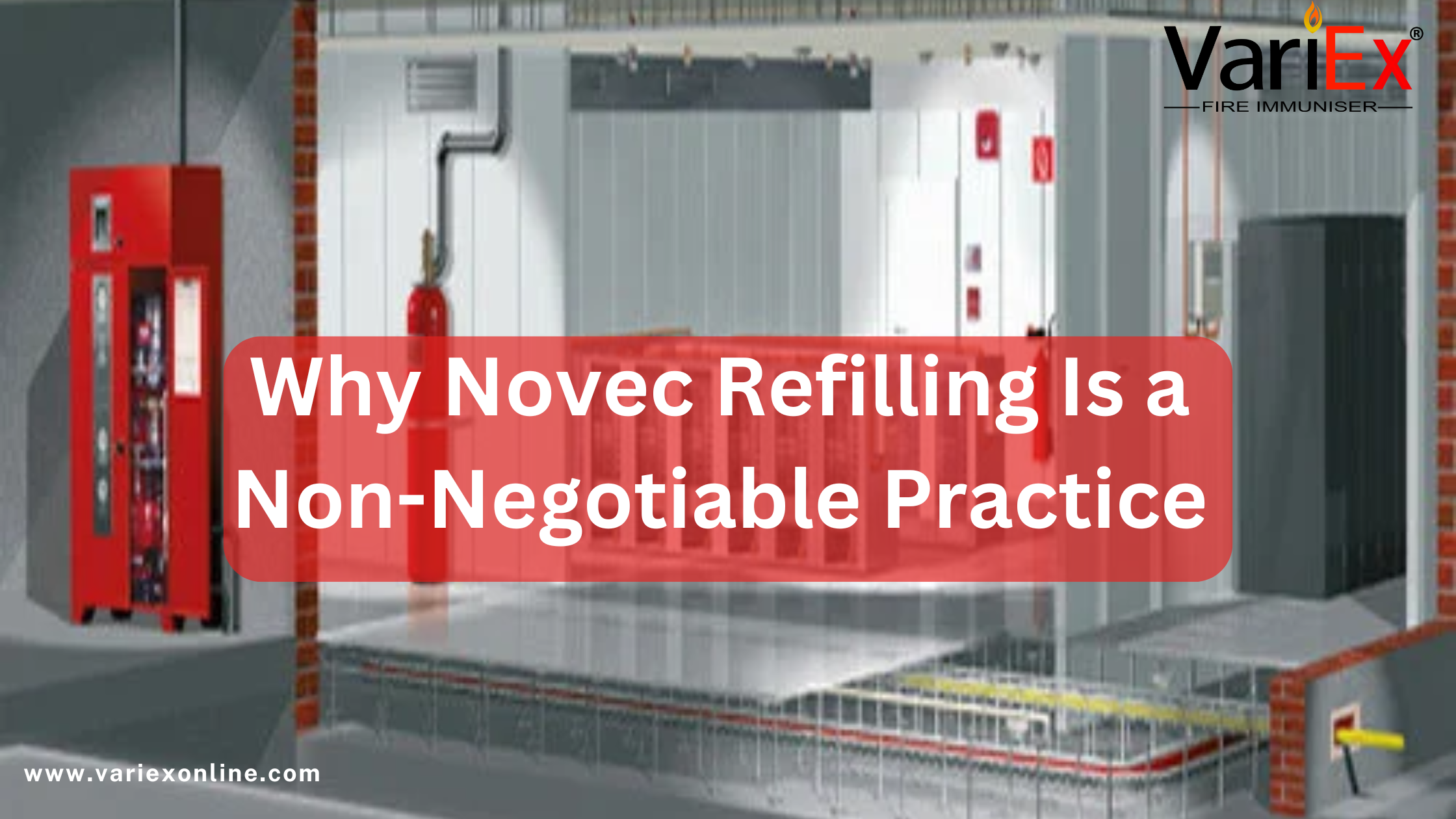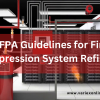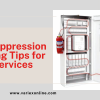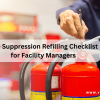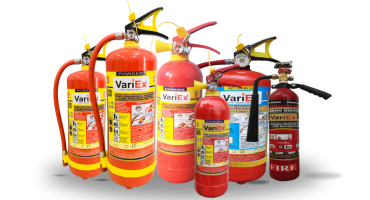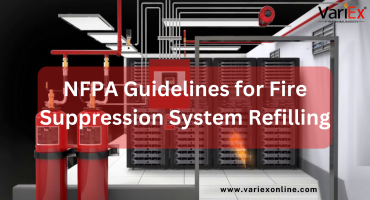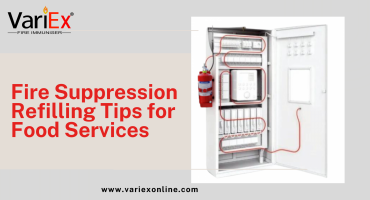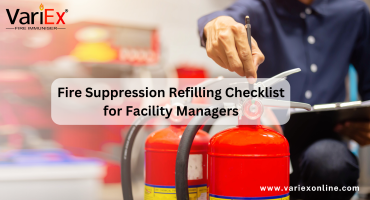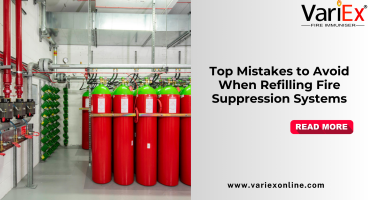![]()
Fire Immuniser
+91-7829629111
Email: info@variex.in
Varistor Technologies Pvt. Ltd.
Block-1, First Floor, Ardente Office One, Hoodi Circle, ITPL Main Road, Bengaluru, Karnataka 560048, IN
Why Novec Refilling Is a Non-Negotiable Practice
Why Novec Refilling Is a Non-Negotiable Practice
In an era where uptime, data security, and life safety are critical, fire suppression systems like Novec 1230 offer clean, efficient protection for sensitive environments. But simply installing these systems isn’t enough. Regular Novec refilling is not just a recommendation—it's an essential part of system maintenance and legal compliance.
This blog explores why Novec refilling should never be delayed or overlooked, who needs it the most, how it works, and what risks are involved in neglecting this vital procedure.
What Is Novec 1230?
Novec 1230 is a clean agent fire suppressant developed by 3M. It’s stored as a liquid and discharges as a gas, quickly extinguishing fires without damaging equipment or leaving residue. Because it’s non-conductive, safe for people, and environmentally friendly, Novec is widely used in:
Data centers
Telecom rooms
Power plants
Control rooms
Healthcare facilities
But like any pressurized system, it requires precise chemical levels and pressure to function. Any discharge—accidental or intentional—requires immediate refilling to maintain effectiveness.
Why Novec Refilling Is Essential
1. Maintains Fire Suppression Readiness
If your Novec system is discharged or leaking, it may no longer suppress fires effectively. Without refilling, it becomes a false layer of security.
2. Ensures Compliance with Fire Codes
Fire safety regulations like NFPA 2001 and ISO 14520 mandate proper refilling and maintenance of gaseous suppression systems. Failing to refill can result in fines or operational shutdowns.
3. Protects Critical Assets
Facilities that rely on Novec typically host high-value data, machinery, or life-supporting systems. Without proper refilling, even a small fire can cause millions in damages.
4. Prevents Insurance Issues
Many insurance policies require proof of suppression system maintenance. If you don’t refill after discharge, your fire claim could be denied.
5. Avoids Operational Downtime
Novec systems protect mission-critical spaces. A fire event, or even a failed fire audit due to an unrefilled system, could lead to costly downtime.
Key Scenarios That Require Novec Refilling
After any system discharge (fire event or accidental release)
When annual inspections reveal low agent levels or pressure loss
After maintenance involving piping or valve adjustments
If system cylinders are relocated or damaged
When new zones are added to the system
Step-by-Step Novec Refilling Process
System Inspection: Technicians check pressure, agent levels, and system integrity.
Agent Recovery: If partially discharged, remaining Novec agent is recovered.
Leak Testing: Piping, valves, and nozzles are checked for leaks or damage.
Refilling: Cylinders are refilled with Novec 1230 agent based on the system’s original design.
Pressurization: The system is repressurized with nitrogen to required specs.
System Recommissioning: Post-refill testing ensures readiness and documentation is updated.
Regulatory Standards You Must Follow
NFPA 2001: U.S. standard for clean agent fire suppression systems
ISO 14520: International counterpart for gaseous suppression systems
Local Fire Safety Codes: May mandate inspection reports, cylinder tags, and refill intervals
Insurance Requirements: Typically require annual verification and post-discharge refilling
Novec Refilling vs. Other Suppression Methods: A Comparison
| Feature | Novec 1230 | FM-200 | CO₂ Suppression |
|---|---|---|---|
| Human Safety | Safe for occupied areas | Safe | Hazardous in occupied areas |
| Environmental Impact | Very low (GWP <1) | Moderate (GWP ~3000) | High |
| Equipment Damage Risk | None | None | High (condensation/electrical issues) |
| Residue After Discharge | None | None | None |
| Refill Cost | Moderate | Moderate | High (due to handling complexity) |
| Ideal Use Case | Data centers, control rooms | Commercial spaces | Industrial, unmanned facilities |
Consequences of Skipping Novec Refilling
Legal Fines & Shutdowns: Fire authorities can shut down non-compliant systems.
Loss of Life & Assets: A fire can spread rapidly if suppression fails.
Insurance Claim Denials: Lack of maintenance voids most policies.
Reputation Damage: Downtime and disaster recovery can damage public trust.
Higher Long-Term Costs: Post-fire cleanup and replacements cost more than routine refilling.
Industries Where Novec Refilling Is Critical
Data Centers – Protects servers and networking equipment from fire and damage.
Banking & Financial Institutions – Keeps trading systems and vaults safe.
Telecommunication Hubs – Ensures communication continuity.
Hospitals & Laboratories – Prevents disruption in life-supporting systems.
Military & Aerospace – Secures mission-critical control rooms and data.
Cost of Novec Refilling
The cost of Novec refilling varies based on cylinder size, the amount of agent needed, location, and urgency. On average:
Small Systems: ₹16,900–₹42,251
Medium to Large Systems: ₹50,702– ₹1,26,770+
Emergency/After-Hour Refilling: May incur extra charges
Though prices may seem high, the cost is minimal compared to the losses from even a single uncontrolled fire incident.
How to Choose a Reliable Novec Refilling Service
Certified Technicians: Look for NFPA or ISO certification.
Agent Authenticity: Ensure they use genuine 3M Novec 1230 agent.
24/7 Emergency Service: Fires don’t wait, and neither should you.
Full Compliance Support: Vendor should provide testing, labeling, and documentation.
The Future of Fire Suppression: Predictive Monitoring
With advancements in IoT-based suppression systems, facilities can now monitor pressure levels in real-time. These smart systems can trigger alerts for refill needs before a discharge occurs. Predictive maintenance models can further reduce risk by detecting anomalies early, making Novec refilling even more proactive and streamlined.
Conclusion
Novec refilling is not optional—it’s essential. Whether you manage a data center, industrial facility, or critical healthcare environment, keeping your Novec fire suppression system fully charged and ready is your responsibility.
A discharged or underfilled system is a false safety net. It creates compliance issues, increases operational risk, and endangers people and property. By prioritizing timely refills, following regulatory protocols, and partnering with certified service providers, you ensure that your fire safety system is ready when it matters most.
Frequently Asked Questions
Only after a discharge or if pressure loss is detected. Routine inspections should occur annually.
No. Refilling must be done by certified fire suppression professionals using approved procedures.
It may fail to extinguish fires effectively, risking damage and violating regulations.
Yes. Novec 1230 is safe for occupied spaces and does not displace oxygen like CO₂ systems.
Look for pressure indicator drops or alerts during annual inspections. Always consult your service provider if unsure.
Final Say
At VariEx.in and VariexOnline.com, we specialize in supplying and installing top-quality fire fighting systems and equipment. From fire extinguishers to advanced suppression systems, we offer comprehensive solutions tailored to your needs. Our experienced team ensures precise installation and maintenance for optimal safety.
Trust VariEx for reliable fire protection. Contact us online or call 7829629111 to learn more.
We specialize in manufacturing, supplying, and distributing a comprehensive range of fire fighting equipment, including state-of-the-art fire extinguishers. Read our most searched blogs and find interesting information on topics such as how to use a fire extinguisher, how to calculate fire fighting water tank capacity, fire extinguisher refilling, obtaining a Fire NOC, understanding fire fighting systems, types of fire protection systems, the fire hydrant system, and the fire sprinkler system. These resources provide essential knowledge for ensuring safety and compliance with fire safety regulations. Additionally, you can explore guides on the maintenance of fire protection equipment, the latest advancements in fire safety technology, and best practices for fire risk assessment and management.
Our expertise extends to fire alarm systems, fire hydrant systems, and fire suppression systems, including fire sprinklers. Each product meets rigorous international standards for reliability and performance, ensuring effective fire safety products tailored to diverse applications and industries. Additionally, we are providing Fire Extinguisher Refilling and AMC services to ensure ongoing maintenance and operational readiness of fire safety equipment.


